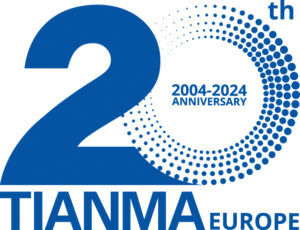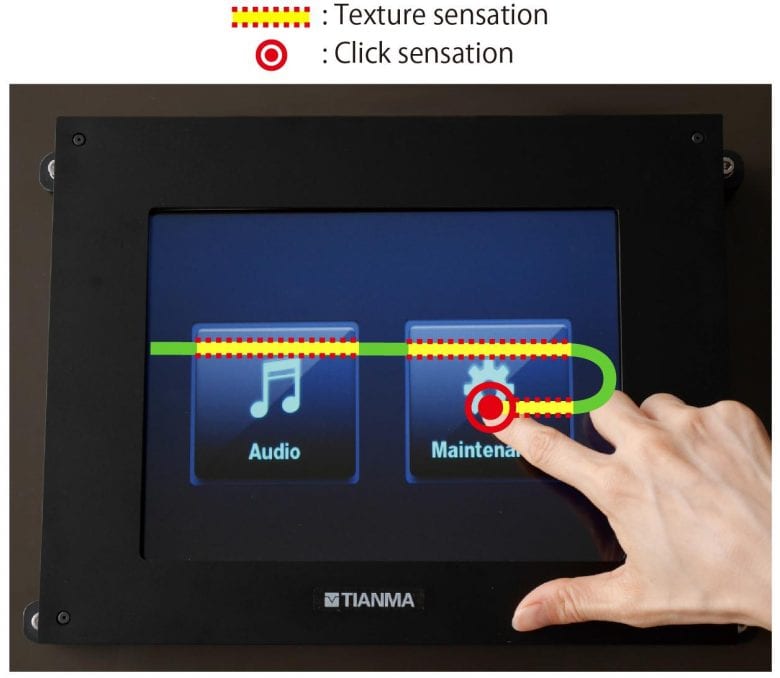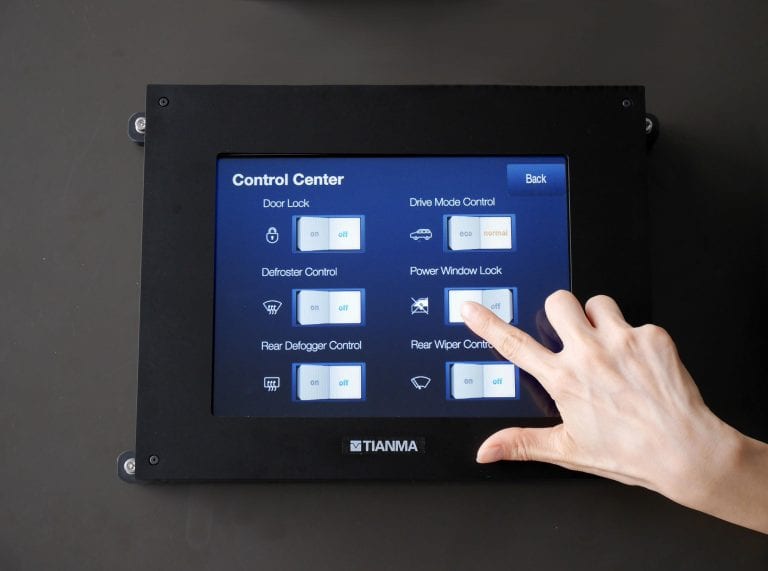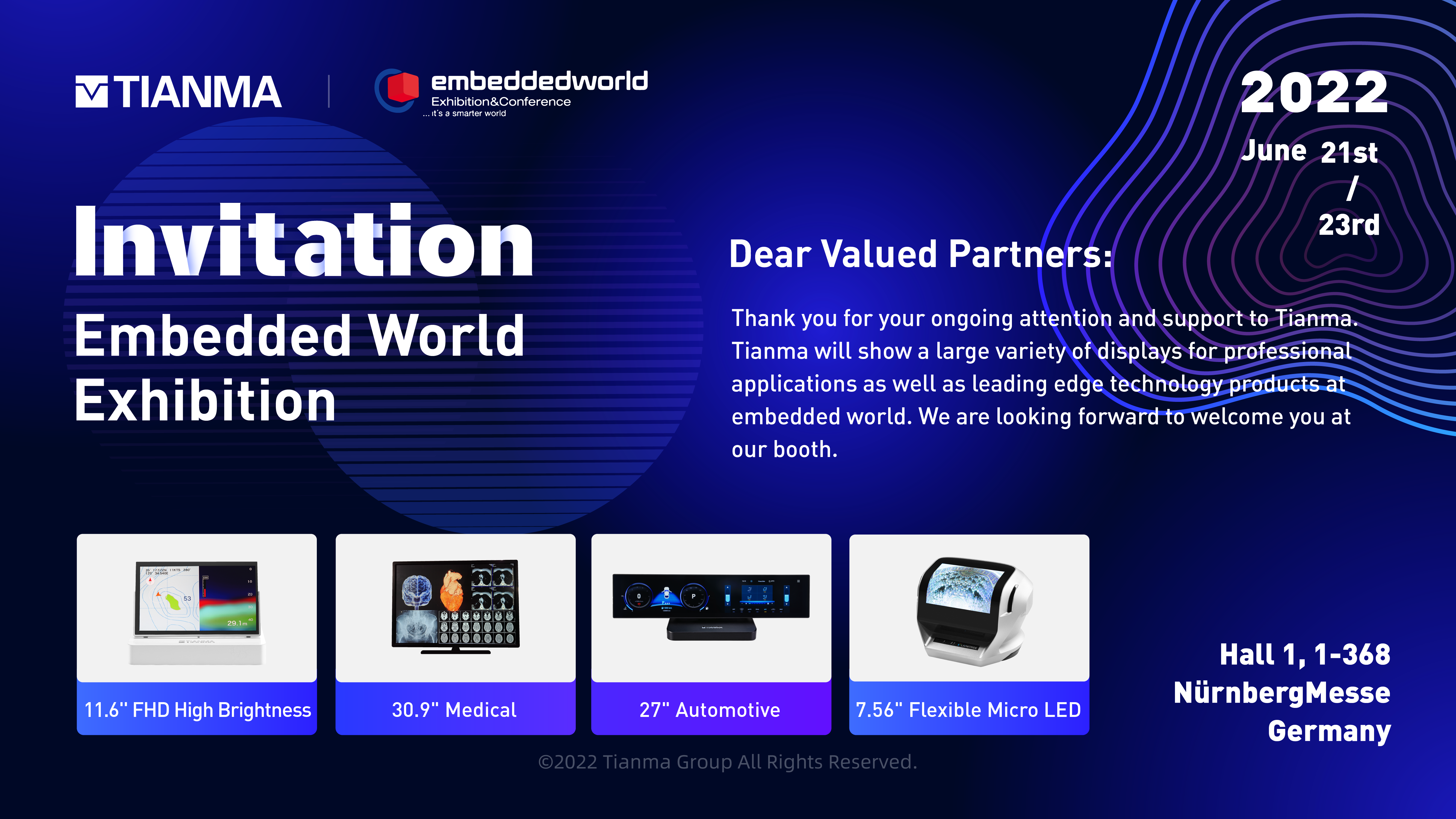KAWASAKI, JAPAN — The Tianma Group has developed a tactile technology with two stimulus sources and prototyped LCD modules utilizing the technology.
With this prototype, when users trace an image (button in the photo example) shown on the display, their fingers will sense a rough “texture” feeling, and when users press an image area, they will sense a “click feeling” as if they are pressing a mechanical button. This will allow users to perform a series of operations such as locating and pressing an on-screen button, and then determining an operation without needing to look directly at the display.
The display arranges multiple electrodes horizontally (X) and vertically (Y) on the glass panel and applies voltage with different frequencies to each X and Y electrode located on the image area. Electrostatic force, corresponding to the difference in the frequencies, occurs at the electrodes’ cross point. When a user traces on the surface, friction variation, modulated by the electrostatic force, occurs. The display uses this friction variation to provide the texture sensation. Furthermore, by mechanically vibrating the display surface as with a pressing motion, it gives the sense of a clicking feeling as if pressing a mechanical push button or switch. By developing a multimodal tactile presentation technology which combines these different tactile effects, we have created a user interface with higher workability and realistic sensation.
We will continue technological development of this tactile touch technology, to expand the use of this tactile display technology to facilitate more intuitive and easily operable in-vehicle displays and industrial devices, universal-design display devices comfortably operable for the visually impaired, and so on.
The new LCD modules will be showcased at “Display Week 2018”, May 22 to 24 in Los Angeles, California, USA, in booth 1005. At the same symposium, a lecture will be given on a technology for presenting the texture feeling on capacitive touchscreens (thesis number 83.3).



